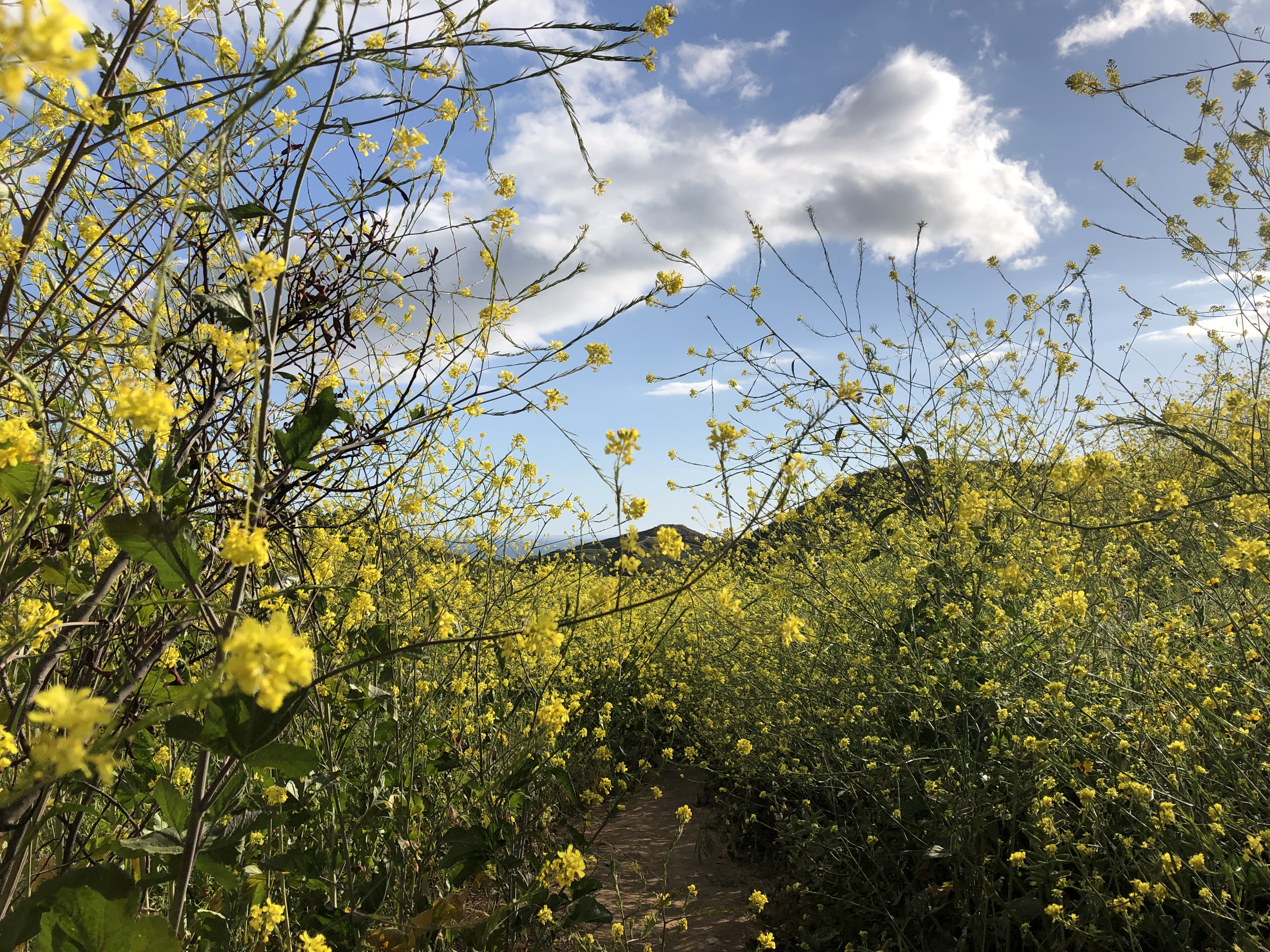News Release

National Park Service
|
Subscribe
|
Contact: Ana Beatriz Cholo, 312-927-4845
Thousand Oaks, CA - As the saying goes, “All that glitters is not gold.” The hillsides covered in lush green and bright yellow flowers after a season of heavy rains have a masquerader that will soon become a forest of dead brown stalks.
Biologists and ecologists say the region is simultaneously experiencing two very different types of a “superbloom” season. One is comprised of stunning native wildflowers and the other is made up of a pernicious weed called black mustard (Brassica nigra). For photos, click here.
Mustard has taken over many of the previously burned hillsides of the Santa Monica Mountains and, indeed, to many a passerby, the hills look lovely. A quick perusal of Instagram is telling as well. Most of the public put these flowers in the same category as poppies, lupines, or phacelias - they contribute to the bucolic aspect of the rural countryside. But in reality, these invasive, non-native plants with the sturdy, bright green stems that lead to tiny yellow flowers at the top are known to push out native vegetation. They also make enjoying the park difficult in the areas where they grow - stalks are thick and clumped close together, which makes hiking and mountain biking on some local trails virtually impossible.
Along both sides of the 101 Freeway, Pacific Coast Highway, Mulholland Highway and throughout the Santa Monica Mountains, these dense, deceptive weeds are ubiquitous. In some areas, mustard can grow up to 10 feet tall.
“In a couple of months, the mustard will dry out, turn brown and become tinder for wildfire,” said Joseph Algiers, a restoration ecologist for Santa Monica Mountains National Recreation Area. “Sadly, newly burned sites are more subject to invasion.”Algiers says there are over 300 non-native species in the Santa Monica Mountains. A core group of them are considered the ‘evil 25’ and along with park staff and volunteers, there is an effort being made to combat the spread of these non-natives. But black mustard is not on the list.
“It would probably be easier to get another man on the moon than to get rid of this invasive plant on a regional scale,” Algiers remarked. He and other biologists feel that although there is little that can be done, it’s important for the public to be aware that this brief moment of beauty will be followed by fields of dead stalks for several years to come.
The impacts of the black mustard have been felt throughout California for decades, but there are many invasive plants that are newly introduced or still manageable. Algiers and his crew of volunteers are focusing on those invasives. About twice a month, they pull weeds and plant natives to tilt the balance from non-native cover to high quality habitat.To sign up or get more information, email Algiers at e-mail us or call him at 805-370-2393.
Santa Monica Mountains National Recreation Area (SMMNRA) is the largest urban national park in the country, encompassing more than 150,000 acres of mountains and coastline in Ventura and Los Angeles counties. A unit of the National Park Service, it comprises a seamless network of local, state and federal parks interwoven with private lands and communities. As one of only five Mediterranean ecosystems in the world, SMMNRA preserves the rich biological diversity of more than 450 animal species and 26 distinct plant communities. For more information, visit www.nps.gov/samo.
###
Last updated: May 22, 2019
